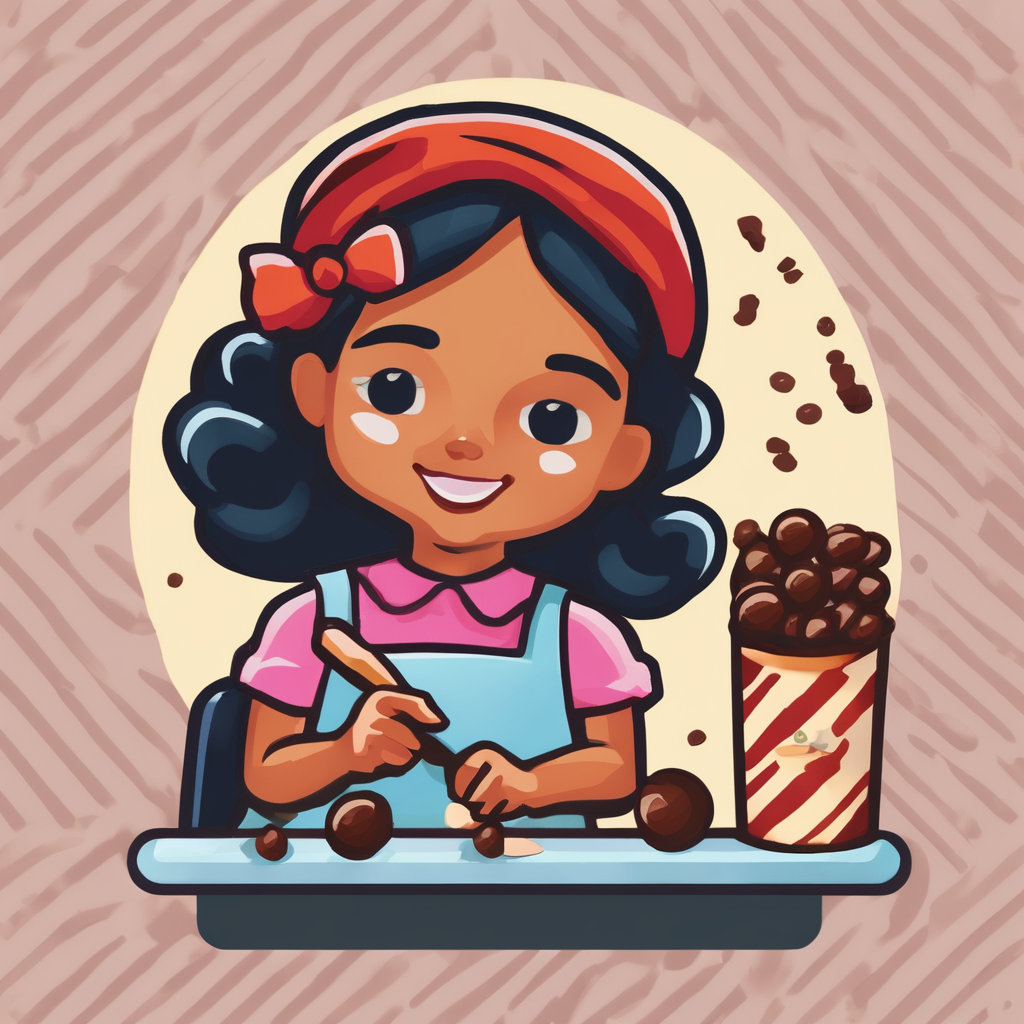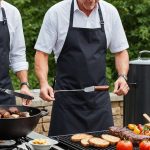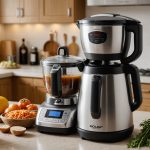Understanding the Importance of Cookware in Roasting Vegetables
When it comes to roasting vegetables, the choice of cookware plays a critical role in achieving an even cooking result. The right cookware helps distribute heat uniformly, ensuring that your vegetables cook at an even rate and develop that perfect golden-brown crust.
Different cookware materials can affect the flavor and texture of the roasted vegetables. For example, metal pans like stainless steel are excellent for crisping but may require more oil, affecting flavor. Glass retains heat well, allowing vegetables to cook through evenly, enhancing their natural sweetness. Meanwhile, ceramic cookware offers even heat distribution but with a gentle touch that prevents scorching, often resulting in a tender interior.
In parallel : Discover the Top Juicer Designs That Simplify Cleanup Efforts!
The shape and size of cookware also impact the roasting results. For instance, a large, shallow pan allows more vegetables to be in contact with the heat source, promoting browning and reducing steam. This can be ideal for achieving that coveted crispy texture. Conversely, deeper pans tend to steam the veggies, leading to a softer texture. Understanding the role of cookware in your roasting techniques can profoundly elevate the quality of your dishes and enhance your cooking proficiency.
Types of Cookware for Roasting Vegetables
Selecting the right types of cookware greatly influences your vegetable roasting results, blending cooking techniques with material strengths.
Also read : The Ultimate Guide to Selecting the Perfect Multi-Level Steam Cooker for All Your Culinary Needs
Metal Cookware
Metal pans, especially stainless steel, rank high for developing a crisp exterior on vegetables. They offer fast heat conduction, which is essential in creating that desirable golden-brown finish. However, be mindful of using additional oil to prevent sticking issues. Aluminum, although lightweight, provides similar properties and is often more budget-friendly, but might not last as long with frequent use.
Glass Cookware
Glass dishes excel in retaining heat, making them an excellent choice for consistent cooking. They allow you to monitor the roasting process due to their transparency, helping you avoid unnecessary burns. While they may not offer the same crisping effect as metal, they shine when highlighting the natural sweetness of veggies. Remember, they are slightly fragile and require careful handling.
Ceramic Cookware
For a delicate and evenly cooked outcome, ceramic is a standout option. It delivers uniform heat distribution, ensuring even cooking throughout. This type of cookware maintains a gentle temperature that prevents the vegetables from scorching, promoting a tender finish. Regular maintenance is vital to prevent glazing from wearing off.
Material Choices and Their Impact
Understanding cookware materials is essential for perfecting your vegetable roasting technique. Each material offers unique benefits, influencing flavor, heat distribution, and safety.
Non-Stick Cookware
Non-stick pans simplify cooking, requiring minimal oil, making them ideal for healthier roasting. They ensure easy release of vegetables, preventing sticking issues, but may not reach the high temperatures necessary for a deep roast flavour. Longevity demands avoiding metal utensils and excessive heat.
Cast Iron Cookware
Renowned for its excellent heat retention, cast iron provides consistent cooking, enhancing caramelisation and imparting a rich flavour. It is incredibly durable, but frequent maintenance with seasoning is vital to prevent rust and sticking. Heavyweight and preheating requirements may be drawbacks for some.
Stainless Steel Cookware
Stainless steel offers a balance of durability and heat conduction, ideal for roasting that requires a versatile approach. It supports higher temperatures, inviting a crisp texture and enhancing flavour complexity. While it lacks non-stick properties, strategic oiling resolves most sticking concerns efficiently. Employ it confidently for reliable results.
Recognising the strengths and limitations of each cookware material is pivotal in elevating your roasting outcomes successfully.
Tips for Roasting Vegetables Effectively
Roasting vegetables to perfection involves more than just selecting the right cookware for roasting; attention to roasting tips and techniques can dramatically elevate your dish. Preheating your oven is critical for achieving an even roast, as starting with a cold oven can lead to uneven cooking. It’s best to set the oven to around 200°C (390°F), ensuring even heat distribution.
In terms of vegetable preparation, cutting vegetables into uniform pieces promotes even cooking. Larger pieces require more time, potentially leading to an undercooked interior if not managed wisely. For enhanced flavor, consider using seasoning and oiling techniques. Lightly coat your vegetables with olive oil to help them develop a delicious, crispy exterior while remaining tender inside. Experiment with salt, pepper, and herbs like rosemary or thyme for a delightful twist.
Proper spacing on the pan is essential to avoid steaming, which affects texture negatively. Leave enough room between pieces for the air to circulate freely, encouraging that sought-after golden-brown color. By incorporating these flavor-boosting techniques, you can optimize the roasting process and achieve restaurant-quality results every time.
Expert Recommendations for the Best Cookware
Selecting the right cookware for roasting vegetables not only enhances the flavour but also aids in achieving optimal cooking results. Drawing from expert opinions, we recommend focusing on cookware that promotes even cooking while retaining the natural essence of the vegetables.
Top-rated Cookware Brands
When it comes to high-performing cookware, certain brands consistently garner praise for both durability and effectiveness. Companies like Le Creuset and All-Clad are renowned for their robust construction and excellent heat distribution, often seen in their cast iron and stainless steel collections.
Features to Look for in Roasting Cookware
For the best roasting outcomes, look for features such as:
- Material: Prefer options like cast iron for heat retention or ceramic for even heat.
- Design: Shallow designs encourage caramelisation while reducing steaming.
- Ease of Maintenance: Non-stick coatings simplify cleaning but require careful handling.
User Reviews and Experiences
Many users praise cookware that combines versatility and resilience, ensuring consistently good results. Practical feedback often highlights the benefits of transparent glass cookware in monitoring the cooking process, providing a consistent visual advantage. Understanding these preferences helps guide suitable choices in cookware for roasting vegetables.
Practical Advice and Recipe Suggestions
Exploring different roasting recipes and techniques can be both delightful and enlightening. Experimenting with various cookware for roasting is a great way to discover your preferred method.
Simple Recipes to Test Different Cookware
Consider trying a basic roasted vegetable medley to test different cookware. Toss a mix of carrots, potatoes, and bell peppers with olive oil, salt, and pepper in your chosen cookware. Metal pans promote a crispy texture, while glass enhances sweetness, allowing you to experience the distinct results firsthand.
Creative Vegetable Combinations for Roasting
Experimenting with combinations can add variety. Try roasting Brussels sprouts with grapes and walnuts or mix sweet potatoes with red onions and rosemary. These creative pairings can elevate flavour while providing a new culinary experience.
Suggestions for Side Dishes
To complement your roasted vegetables, consider pairing them with dishes like quinoa salad or garlic mashed potatoes for a satisfying side. Incorporating roasted garlic or lemon zest can add depth and brightness to your side dishes, creating a harmonious dining experience.
Dive into these practical cooking tips and explore the full potential of different cookware to enhance your culinary skills.



